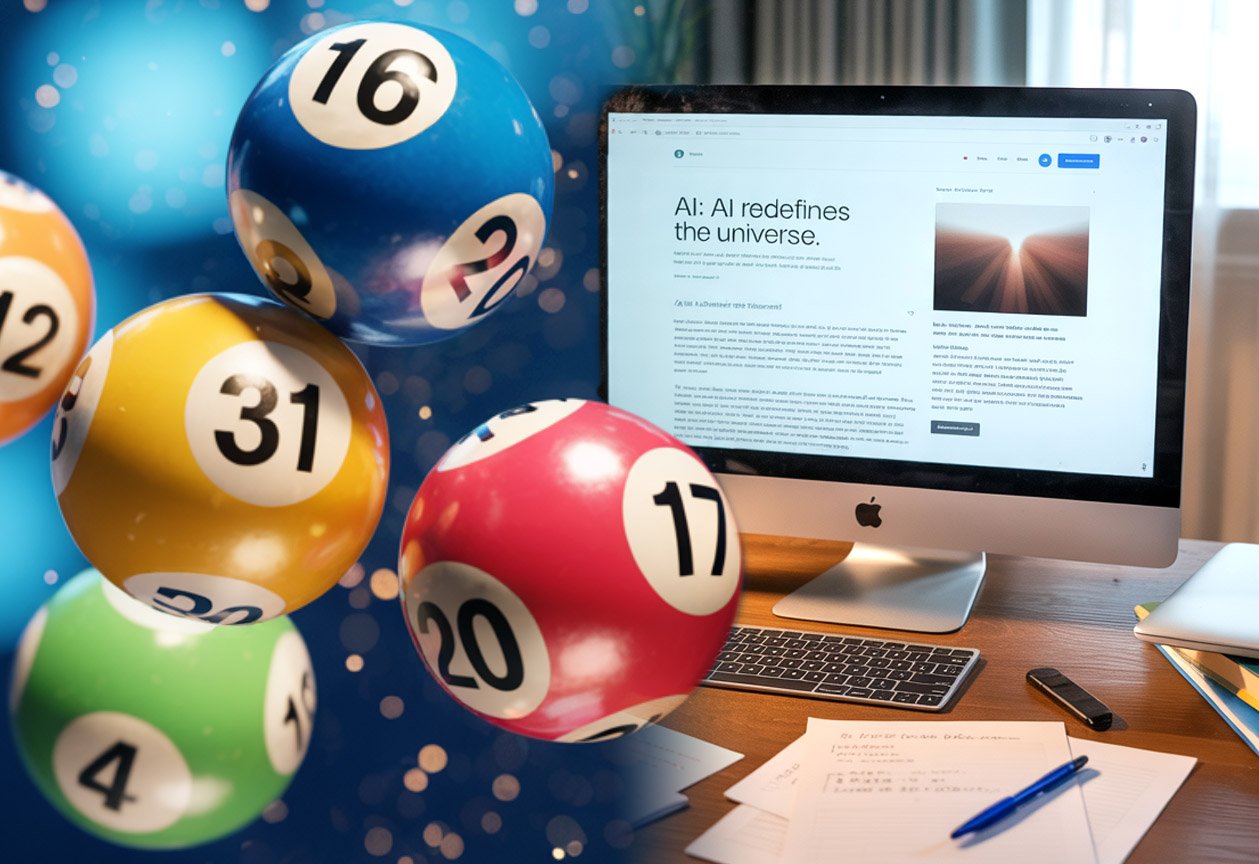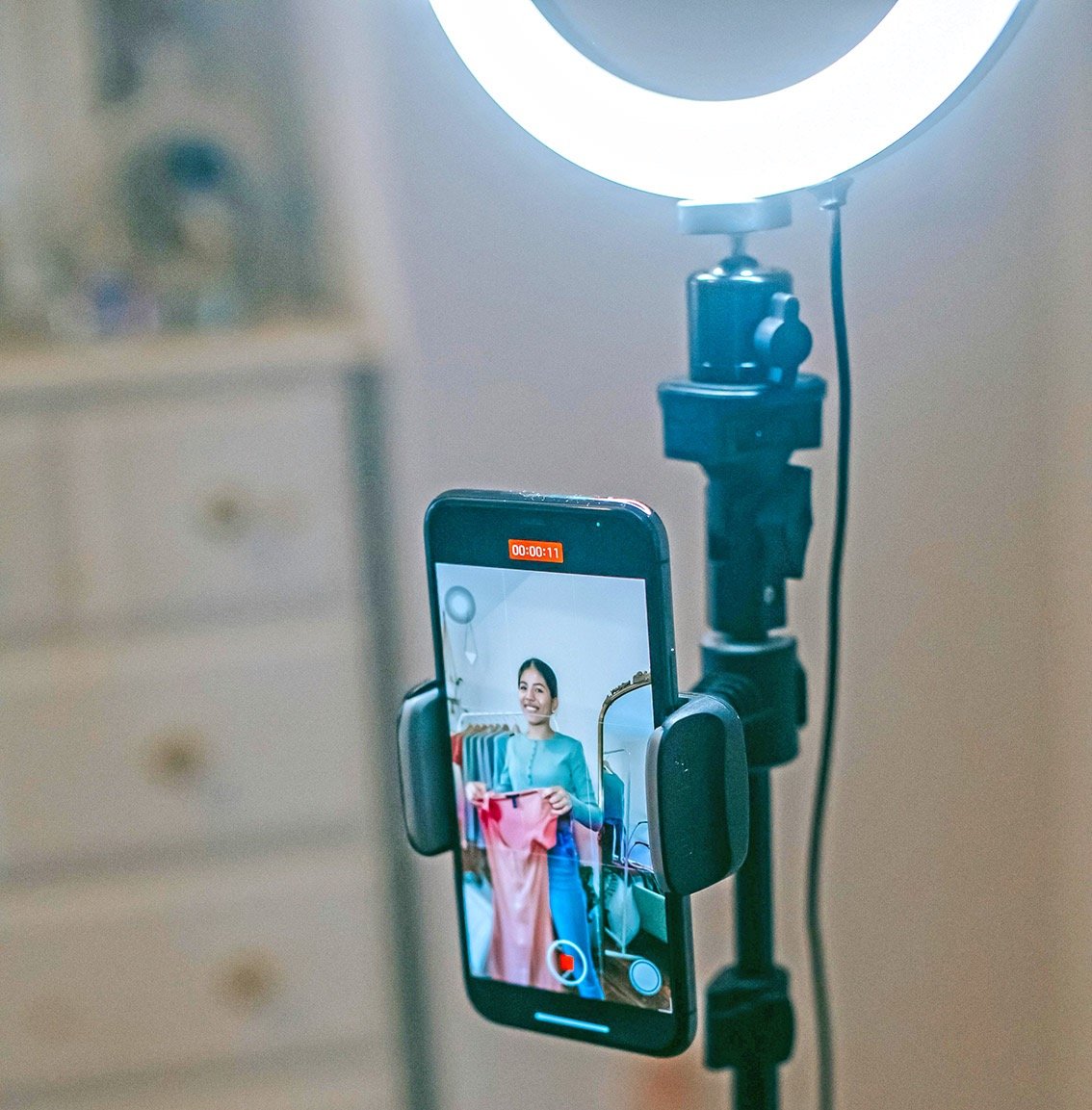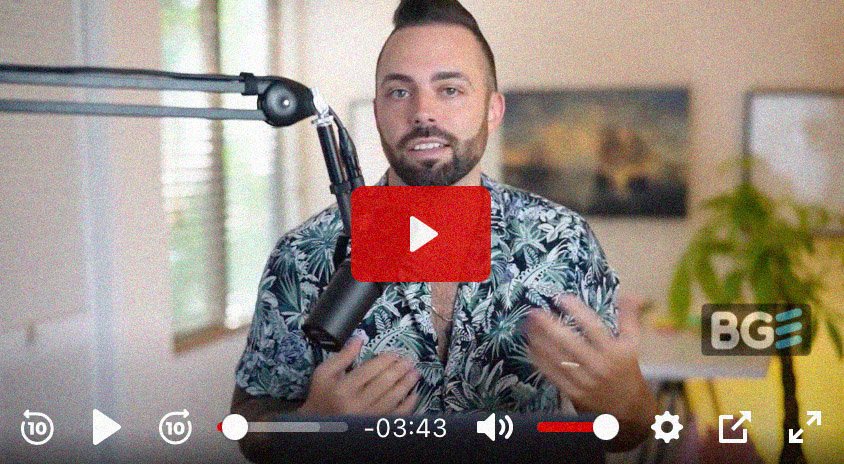Betting on yourself: why creating content will always be more profitable than playing the lottery
“Why spend hours creating blog posts or videos, when you could just buy a lottery ticket and strike it rich?”
I’m often surprised to realise how much this remains a tempting thought for some. The lottery offers the dream of instant wealth, while building an online income can feel like slow, uphill work.
But when you compare the odds and the long-term potential, content creation clearly stands out. Here’s a breakdown of which path actually makes sense if your goal is financial success, as well as an insight into the psychology behind each choice.

Content creation: building an asset, not just hoping for luck
The world of blogging, YouTube, and social media isn’t a get-rich-quick scheme, but for those who stick with it, the potential is very real.
Earning potential: what the numbers say
Surveys make one thing clear: turning a blog or YouTube channel into real income takes time. On average, bloggers report waiting around 21 months before earning their first dollar, and nearly four years before reaching full-time income.
That said, many creators progress faster. About 28% of bloggers earn something within six months, and more than a third manage to reach full-time income by their second year.
YouTube shows a similar pattern of imbalance. The top 3% of creators capture 90% of all views, and with them, the bulk of ad revenue. Yet beyond that elite tier, many smaller channels still carve out meaningful side incomes by combining ads with sponsorships, affiliate links, or merchandise sales.
Even a modest blog or channel can eventually generate $1,000 to $5,000 a month after a few years. Certain niches, such as finance or technology, often earn far more per viewer than lifestyle or art content. Affiliate marketing follows the same trend: while more than half of affiliates earn less than $10,000 a year, skilled practitioners regularly cross into six-figure territory.
The conclusion is straightforward: most creators won’t become millionaires, but there is a wide middle ground of success, one that can make a tangible difference in people’s lives.
What actually drives success?

Unlike gambling, creators can actively improve their odds of success. Several factors consistently show up among those who turn content into income. Audience size and engagement come first: more views, clicks, and loyal followers almost always translate into higher revenue. Consistency and quality matter too. Posting two to three times a week keeps algorithms satisfied and gives audiences a reason to return.
Smart monetization strategies make a big difference. Instead of relying on a single income stream, successful creators diversify, mixing ads, sponsorships, affiliate links, and eventually their own products. Niche selection also plays a role: finance and tech tend to command much higher ad rates than lifestyle or art, where payouts per view are smaller. Underpinning it all is trust. People buy from, and share content by, creators they consider authentic, making credibility one of the most valuable assets.
Every blog post or video can be thought of as a digital asset with the potential to earn for years. The more you create, the stronger the compounding effect becomes: a snowball of growth and income that simply doesn’t exist in gambling.
Viral successes, and plenty of everyday wins
The headline-grabbing stories are certainly inspiring. Pat Flynn of “Smart Passive Income” has earned more than $3.5 million online. Michelle Schroeder-Gardner of “Making Sense of Cents” once shared monthly earnings that peaked at $100,000. On YouTube, MrBeast reported making around $54 million in 2021 alone.
But just as encouraging are the countless smaller wins. Niche bloggers who quietly bring in $5,000 a month, or micro-influencers who secure steady brand partnerships, prove that success doesn’t have to be measured only in millions.
The common thread is persistence. Every blog post, video, or collaboration expands your reach, sharpens your skills, and strengthens a personal brand that can continue to pay dividends for years to come.

The lottery: a tax on hope
The lottery promises dreams of instant wealth, but the numbers tell a much harsher story. The odds of hitting a Powerball jackpot stand at one in 292 million, while Mega Millions is even tougher at one in 302 million. Winning any prize in Powerball is about one in 24, and most of those payouts are just four or seven dollars.
Scratch-off tickets might look more inviting with “one in three” chances advertised, but the reality is that big wins are still usually one in a million or worse. Even if you played every single week for fifty years (a lifetime of 2,600 tickets), your odds of a major jackpot would barely budge. Statistically, you’re far more likely to be struck by lightning multiple times than to take home the grand prize.
A losing game by design
Lotteries pay out only 50–60% of ticket sales as prizes. That means for every $1 spent, you’re statistically losing about 40¢.
A $10-a-week habit costs $520 a year with almost no chance of a big payout. And even jackpot winners face reality checks: lump-sum payouts are usually 50–60% of the advertised amount (before taxes).
Unlike content creation, which can generate ongoing income, lottery winnings are one-shot events. You either win or you don’t: there’s no way to “build” anything over time.

Why people still play: the psychology of hope
If the odds are so terrible, why do millions of people keep buying tickets? The simple answer is that buying a ticket feels good. Studies show that just holding one can lift a person’s mood, even if they never bother to check the results. What the lottery is really selling is a bundle of powerful emotions.
It offers the dream of instant wealth: two dollars buys you permission to imagine a completely different life. It creates the illusion of fairness, since everyone supposedly has the same chance regardless of income or background. And it delivers little dopamine hits: those occasional $5 or $10 wins trigger the same addictive brain response as slot machines.
The problem is that it’s all passive. No matter how many tickets you buy, you can’t tilt the odds in your favor. Every new draw resets your chances back to almost zero.
The psychology of content creation: slow wins, real growth
Content creation runs on a very different psychology than the lottery. Instead of chasing luck, it’s driven by intrinsic motivation: the passion to create, the desire for independence, or the satisfaction of sharing ideas. Progress feels earned. Reaching 1,000 subscribers or making your first $100 in ad revenue isn’t random chance, it’s proof that your work is starting to pay off.
It also requires delayed gratification. Success doesn’t come overnight, but every blog post or video becomes a step toward long-term growth. Unlike the lottery, creators have a degree of control. By improving your content and learning to understand your audience, you actively increase your odds of success. Along the way, you develop valuable skills (from writing and video editing to marketing), that can open doors to other income opportunities, even if your first project never fully takes off.

Effort vs luck: the core difference
The contrast couldn’t be sharper:
Lottery | Content Creation |
Pure luck – no skill involved | Skill-based – you can improve your odds |
Almost guaranteed long-term loss | High odds of at least modest success |
One-time payoff, if any | Recurring, compounding income potential |
No transferable skills gained | Builds skills, brand, and opportunities |
Thrill lasts minutes | Growth and rewards can last years |
If we compare chances of real wealth: around 10% of Americans become self-made millionaires in their lifetime, while the odds of hitting a lottery jackpot are less than 0.000001%. Statistically, you’re thousands of times more likely to build wealth through effort than luck.
The verdict: build something and bet on yourself, not on chance
Buying a lottery ticket once in a while can be fun, and there’s nothing wrong with enjoying the thrill of possibility. But as a financial strategy, the lottery is a dead end.
Content creation, by contrast, is work, but it’s work that pays. Every blog post, video, or social update is an investment in something you own, something that can continue to generate returns for years. If you want a quick adrenaline rush, buy a ticket. If you want financial progress, start creating.
As the saying goes:
Lottery: “Don’t gamble more than you can afford to lose.”
Content creation: “You get back what you put into it.”
When it comes to building long-term financial freedom, creating value beats chasing chance every single time.
🎧
Prefer to listen? This topic is also explored in one of my podcast episodes:
Content creation vs lottery FAQ
Sources:
- Pew Research Center: Gig Work, Online Selling and Home Sharing (2016) or (2021)
Survey-based insights into side hustles, online selling, and digital gig work. - Pat Flynn: SmartPassiveIncome.com
Blog and resources sharing Pat Flynn’s earnings, strategies, and insights from building online income. - Michelle Schroeder-Gardner: MakingSenseOfCents.com
Blog sharing Michelle’s journey and affiliate earnings, including six-figure monthly reports. - Forbes: The Highest-Paid YouTube Stars: MrBeast, Jake Paul And Markiplier Score Massive Paydays (2022)
Annual ranking of YouTube creators by revenue. - Forbes: Top Creators: The creator economy is growing fast—and growing up (2024)
Annual ranking of social media creators by revenue. - BloggingWizard.com: How Long It Takes to Make Money Blogging (2025)
Analysis of timelines and factors affecting blog monetization. - Ahrefs Blog: 73 Blogging Statistics for 2024
Study of blogger income distribution, niches, and monetization strategies. - Ahrefs Blog: How Do Blogs Make Money: 10 Ways to Cash In (+ Pros & Cons) (2024)
Study of blogger monetization strategies. - PayScale: Affiliate Marketing Salary Range (2025)
Compensation data for affiliate marketers worldwide. - YouTube revenue data (via SocialBlade and Influencer Marketing Hub)
Analytics and estimates of YouTube ad revenue and creator earnings. - Influencer Marketing Hub: TikTok Creator Fund Explained
Guide to TikTok monetization and creator fund payouts. - Powerball.com and MegaMillions.com
Official lottery websites providing jackpot odds, rules, and payout structures. - The Atlantic: The Economics of the Lottery Ticket (2011)
Article exploring the psychology behind lottery participation. - Knowledge at Wharton: Why Do People Play the Lottery? (2025)
Article exploring the psychology behind lottery participation. - Wiley Online Library: The Economic Psychology of Gambling (2017)
This paper discusses the economic, psychological and neurological roots of problem gambling. - Psychology Today: The Psychology of Why We Play Lotto
Analysis of behavioral and psychological drivers of lottery play. - Business Insider: Odds No One Wins Powerball
This article looks at the odds of winning the Powerball: “For every ticket you buy, you have a 1 in 292,201,338 chance of winning the jackpot, or a 0.00000034% probability.”
Great to have you here! Feel free to leave your thoughts in the comments.
Hello, I’m John Dawson, a graphic designer (for a little while longer) and the writer behind DawsonDecoded, where I share hands-on insights on AI, blogging, social media, and whatever else crosses my mind.”
Get new posts by email when they’re worth sharing.
No spam.
You might like:
Words that are mine
Reading Time: 2 minutesAfter months of writing mostly for algorithms and sales funnels, I stopped obsessing over online income and started writing in my own voice.
Eight months chasing a mirage
Reading Time: 3 minutesEight months in, I’m changing course. I’m going back to casual blogging and stepping away from the commercial / affiliate angle. The pressure’s off, and I finally have my life back.
How to start a blog and find your first readers (part 3)
Reading Time: 9 minutesMake it look and feel professional: pick a lightweight theme, set a basic brand kit, and publish the must‑have pages.
How to fact-check your blog post
Reading Time: 5 minutesFact-checking protects both you and your readers. This simple process allows you to separate facts from opinions, verify claims, and add safeguards so your published content remains accurate, credible, and trustworthy.
Can you still make a living from a blog in 2025?
Reading Time: 5 minutesBetween viral promises and reality, can a blog still generate a viable income in 2025? Here’s what the numbers say.
Blogging with AI
Reading Time: 4 minutesAI can speed up ideas, drafts, and edits, but it should assist rather than replace you. Keep your voice, verify facts, and add your perspective so posts stay authentic and useful.
How to start a blog and find your first readers (part 2)
Reading Time: 8 minutesIn Part 2 of this beginner’s guide, we move from idea to reality by getting your blog online. You’ll learn what domains and hosting actually are, and how to install WordPress in just a few clicks.
From BGE to “Launch to $10K”, Enfroy’s strategic shift signals the end of SEO-first blogging
Reading Time: 4 minutesAs of November 2025, BGE runs as a free masterclass and Enfroy funnels to Launch to $10K. With AI Overviews reducing clicks, commercial blogging is rarely a standalone model anymore.
How to start a blog and find your first readers (part 1)
Reading Time: 6 minutesLearn how to choose a blog niche you’ll love and a name that can grow with you, the first step in building a successful blog.
The dark side of online income: how scammers are using AI and social media to make millions
Reading Time: 7 minutesScammers use AI and social media ads to create fake funnels that mimic legitimate ones. This post explains how they work and what ethical marketers can learn.












Leave a Reply